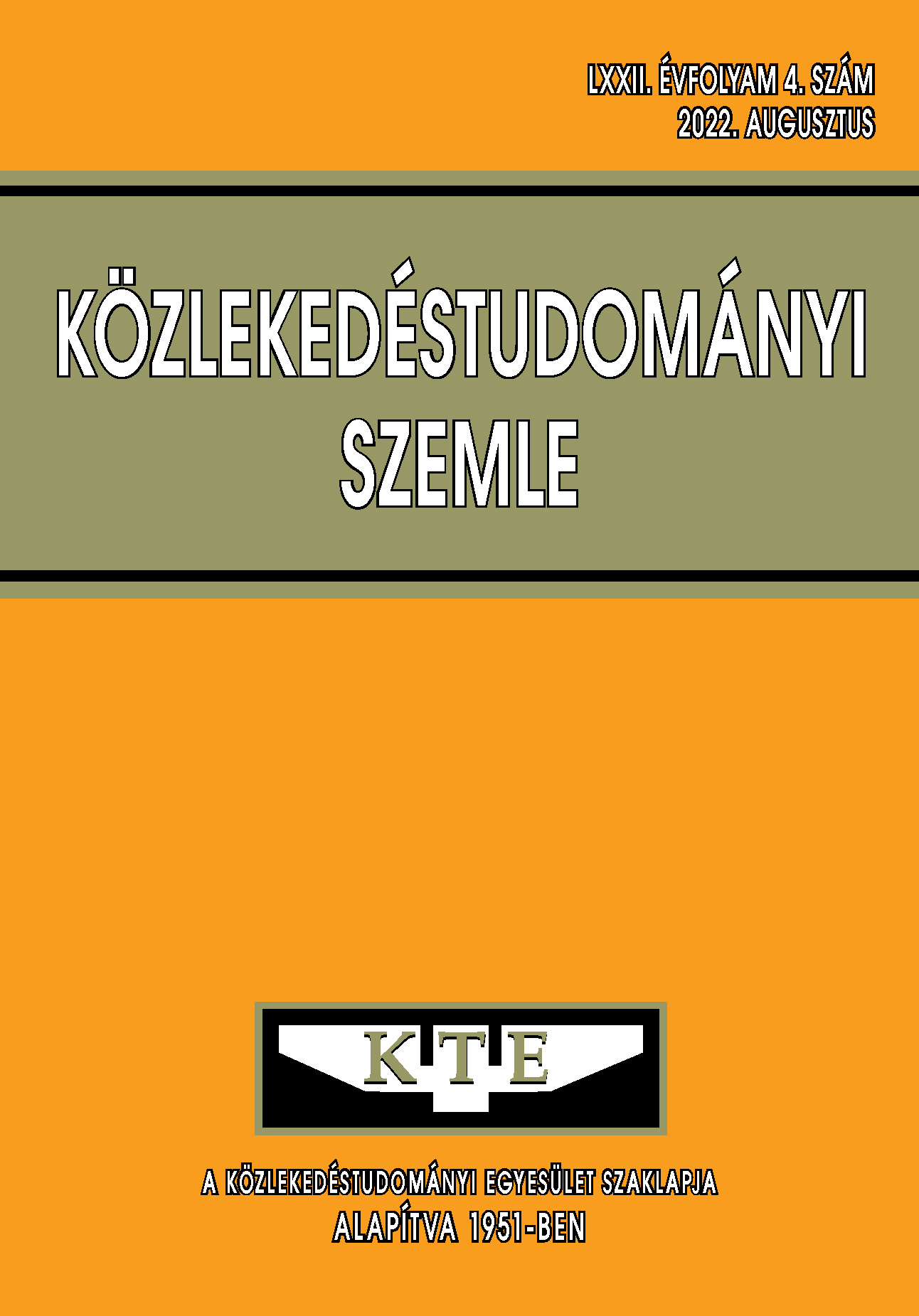The role of intelligent infrastructure in the development of road safety and autonomous vehicles
Abstract
Intelligent infrastructure supports the traffic and testing of self-driving vehicles, as well as regulatory activity and the possibility to change traffic rules, providing an excellent location to carry out road tests of ADAS systems. There are a number of benefits to the gradual integration of self-driving vehicles into transport. Most importantly, the development of appropriate
regulations and the inclusion of autonomous vehicles in regulated traffic can significantly increase road safety, significantly reduce the number and severity of accidents involving personal injuries and result in reduced congestion.
References
Horváth, M.T.; Lu, Q.; Tettamanti, T.; Török, Á.; Szalay, Z.: Vehicle-in-the-loop (VIL) and scenario-in-the-loop (SCIL) automotivesimulation concepts from the perspectives of traffic simulation and traffic control. Transport and Telecommunication Journal 2019, 20, 153–161. DOI: https://doi.org/f9v5
Solmaz, S.; Rudigier, M.; Mischinger, M. A Vehicle-in-the-Loop Methodology for Evaluating Automated Driving Functions in Virtual Traffic. 2020 IEEE Intelligent Vehicles Symposium (IV), 2020, pp. 1465–1471 DOI: https://doi.org/h3m5
Robotics & Automation News https://roboticsandautomationnews.com/2017/07/01/adas-features-ofadvanced-driver-assistance-systems/13194/
BME – Magyar Közút – DMLAB Közúti gépjármű forgalom raj-viselkedésének elemzésére alkalmas kutatás-fejlesztési infrastruktúra és kompetencia létrehozása - Megvalósíthatósági tanulmány Innovatív Mobilitás Program, KTI_KVIG_9-3_2021
Nagy, Á. – Tomaschek, T.: “Towards Connected and Automated Driving – Achievements of Crocodile, and Plans of Future”, XV. European Transport Congress and X. International Road Congress, Budapest, 2017. június 8-9. ISBN 978-615-5298-99-8
C-Roads, The platform of harmonised C-ITS deployment in Europe, https://www.c-roads.eu/
ECo-AT (European Corridor – Austrian Testbed for Cooperative Systems) http://eco-at.info/
Tomaschek Tamás: “Towards Connected and Automated Driving in Hungary – The Changing Role of the Road Operator” - PROCEEDINGS MAÚT25 International Scientific Symposium Budapest, 2019. szeptember 17-18. ISBN 978-615-00-6240-2
Magyar Közút Nzrt. C-Roads National Evaluation Report for Hungary: PVD and GLOSA (Version 1.0), C-Roads Working Group 3 – Evaluation and Assessment, June 2021
INFRAMIX prepare the road infrastructure with specific affordable adaptations and to support it with new models and tools, to accommodate for the stepwise introduction of automated vehicles https://www.inframix.eu/
Carreras A., Daura X., Erhart J., Ruehrup S. Road infrastructure support levels for automated driving (EU-TP1488) 25th ITS World Congress, Copenhagen, Denmark, 17-21 September 2018
Szalay, Zs.; Hamar , Z.; Simon , P. (2018) A Multi-layer Autonomous Vehicle and Simulation Validation Ecosystem Axis: ZalaZONE. In: Strand, Marcus; Dillmann, Rüdiger; Menegatti, Emanuele; Ghidoni, Stefano (editor) Intelligent Autonomous Systems 15, Cham, Switzerland: Springer International Publishing, 954-963. ISBN: 9783030013707
Lengyel, H.; Tettamanti, T.; Szalay, Zs. Conflicts of Automated Driving With Conventional Traffic Infrastructure, IEEE Access PP(99):1-1 DOI: https://doi.org/gjr2v9
Tihanyi, V.; Tettamanti, T.; Csonthó, M.; Eichberger, A.; Ficzere,D.; Gangel, K.; Hörmann, L.B.; Klaffenböck, M. A.; Knauder, C.; Luley, P.; et al. Motorway Measurement Campaign to Support R&D
Activities in the Field of Automated Driving Technologies, Sensors 2021, 21, 2169. DOI: https://doi.org/gjkp5w
Tihanyi, V.; Rövid, A.; Remeli, V.; Vinccze, Zs.; Csonthó, M.; Pethő, Zs.; Szalai, M.; Varga, B.; Khalil, A.; Szalay, Zs. Towards Cooperative Perception Services for ITS: Digital Twin in the Automotive Edge Cloud, Energies 2021, 14(18), 5930 DOI: https://doi.org/gndb36
Kakan C. Dey; Li Yan; Xujie Wang; Yue Wang; Haiying Shen; Mashrur Chowdhury; Lei Yu; Chenxi Qiu; Vivekgautham Soundararaj A Review of Communication, Driver Characteristics, and Controls Aspects of Cooperative Adaptive Cruise Control (CACC) IEEE Transactions on Intelligent Transportation Systems, Volume 17, Issue 2, Feb. 2016, pp 491–509. DOI: https://doi.org/f7945p
Articles published electronically are open access (OJS), freely available online and can be downloaded. Authors of articles are not charged any publication or publishing costs (APC). Users have the right to read, download, copy, print, and search the articles, or share the full text with a link.
Authors must declare that their submission has not been previously published in another journal, that financial support has been acknowledged, and that the list of references is complete and accurate, including specification of URLs and DOIs (if available). When submitting a draft article, each author approves the submitted version. Authors guarantee that the article is their original work. Authors are required to participate in the peer review process, follow the advice of reviewers, meet the prescribed deadlines, and, if any, withdraw the submission or correct errors.
All submitted articles are subject to peer review, where the editors request an independent evaluation from at least one expert, ensuring that the reviewer(s) have no conflicts of interest with the authors. The final decision is made by the Editor-in-Chief, who takes into account the evaluations and the suggestions of the editors. The editors and reviewers treat the submission confidentially.
The publisher and editors are committed to maintaining high ethical standards and to preventing publications that involve research misconduct. They follow the COPE guidelines on such ethical issues.
The authors retain copyright and grant the journal the right of first publication under the Creative Commons License (https://creativecommons.org/licenses/by-nc-nd/4.0), which allows others to share the work, while acknowledging the authorship of the work and the first publication in the journal.
The journal archives all published articles, and the journal's owner, the Hungarian Society of Transportation Sciences, will continue to operate the database even if the journal ceases to be published.















